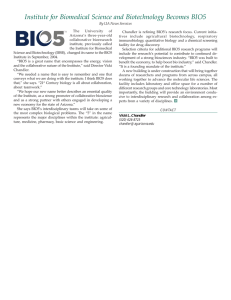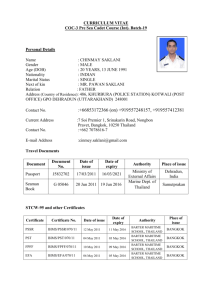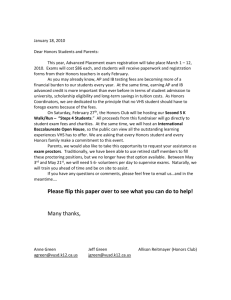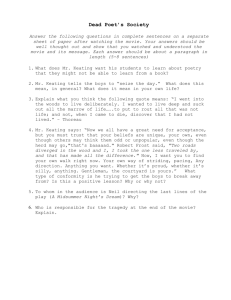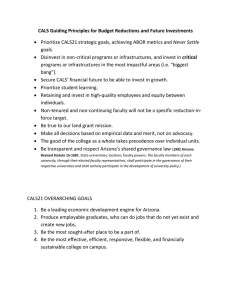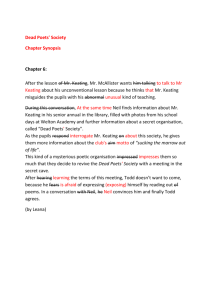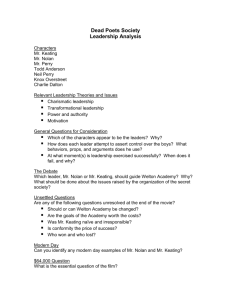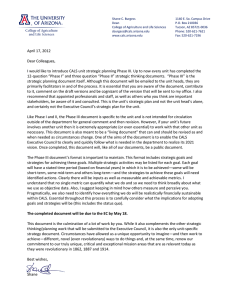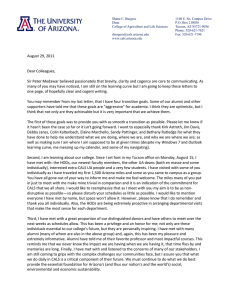Document 10829105
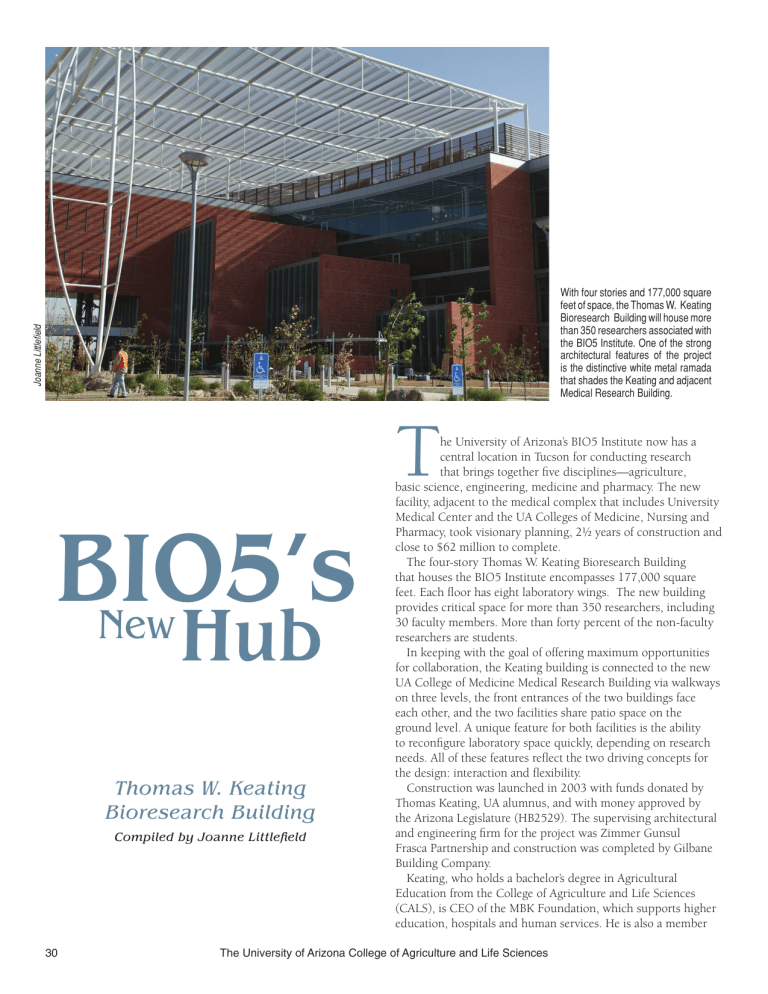
30
BIO5’s
New Hub
Thomas W. Keating
Bioresearch Building
Compiled by Joanne Littlefield
With four stories and 177,000 square feet of space, the Thomas W. Keating
Bioresearch Building will house more than 350 researchers associated with the BIO5 Institute. One of the strong architectural features of the project is the distinctive white metal ramada that shades the Keating and adjacent
Medical Research Building.
T he University of Arizona’s BIO5 Institute now has a central location in Tucson for conducting research that brings together five disciplines—agriculture, basic science, engineering, medicine and pharmacy. The new facility, adjacent to the medical complex that includes University
Medical Center and the UA Colleges of Medicine, Nursing and
Pharmacy, took visionary planning, 2½ years of construction and close to $62 million to complete.
The four-story Thomas W. Keating Bioresearch Building that houses the BIO5 Institute encompasses 177,000 square feet. Each floor has eight laboratory wings. The new building provides critical space for more than 350 researchers, including
30 faculty members. More than forty percent of the non-faculty researchers are students.
In keeping with the goal of offering maximum opportunities for collaboration, the Keating building is connected to the new
UA College of Medicine Medical Research Building via walkways on three levels, the front entrances of the two buildings face each other, and the two facilities share patio space on the ground level. A unique feature for both facilities is the ability to reconfigure laboratory space quickly, depending on research needs. All of these features reflect the two driving concepts for the design: interaction and flexibility.
Construction was launched in 2003 with funds donated by
Thomas Keating, UA alumnus, and with money approved by the Arizona Legislature (HB2529). The supervising architectural and engineering firm for the project was Zimmer Gunsul
Frasca Partnership and construction was completed by Gilbane
Building Company.
Keating, who holds a bachelor’s degree in Agricultural
Education from the College of Agriculture and Life Sciences
(CALS), is CEO of the MBK Foundation, which supports higher education, hospitals and human services. He is also a member
The University of Arizona College of Agriculture and Life Sciences
and immediate past chair of the BIO5
Business Advisory Board.
“This building provides an opportunity for faculty in the CALS to enhance their collaboration with faculty in several other colleges,” says Colin Kaltenbach, CALS vice dean and director of the Arizona
Agricultural Experiment Station. “The overall research effort within CALS and across the university will be significantly enhanced by this very functional and attractive new facility.”
Examples of CALS research that lends itself to interaction with other disciplines include nutritional studies related to diabetes prevention and treatment, crop production in controlled environments such as greenhouses, decoding the corn genome, and other projects.
The building also houses core “service centers” that support research programs across the campus and the state.
These services include genomics (gene mapping); proteomics (structure and function of proteins); and informatics
(computer applications, statistics and other information tools).
Since its creation in the early 2000s, the BIO5 Institute and its collection of researchers has been a tight-knit organization in practice, but not in physical proximity. The scientists were scattered across the UA campus in separate laboratories with no real place to confer on a regular basis. The collaborative bioresearch institute was previously called the Institute for
Biomedical Science and Biotechnology
(IBSB). The name was changed to the
BIO5 Institute in September 2004, and the institute became a physical reality in late 2006 with completion of the Keating facility.
“For the past five years we have been a virtual institute,” says University of
Arizona Regents Professor and BIO5
Director Vicki Chandler. “Now our programs will reach out across the campus and the Keating building will provide an administrative home, serving as a hub for all of our research and education programs.”
A unique feature for both facilities is the ability to reconfigure laboratory space quickly, depending on research needs.
How does this look in action?
One example is that researchers in basic sciences such as biology and biochemistry may be housed with experts in engineering and agriculture, sharing cutting-edge facilities like highthroughput screening to identify new drug compounds, or genomics to study the structure and function of genes.
In another example, BIO5-affiliated researchers who still work in laboratories on other parts of the campus (the new building isn’t large enough to house them all) will be able to meet and share ideas at the main facility.
In addition to housing research functions, the building will provide a
Laboratory modules feature moveable benches that can be reconfigured quickly based on need. There are six lab modules per wing (660 sq. ft. per module) in the new building. Each module has four benches programmed for eight researchers.
The BIO5
Institute Mission
BIO5 is a collaborative bioresearch institute bringing together scientists from 5 disciplines— agriculture, medicine, pharmacy, basic science and engineering–to solve complex biological problems. BIO5 creates science, education and industry partnerships to disseminate knowledge and apply the knowledge gained to treat disease, feed humanity and preserve livable environments.
forum where the public can participate in educational programs, workshops and seminars. BIO5 administrators hope the planned events will draw visitors from around the state and the world, including researchers, bioscience industry leaders, local and state politicians, teachers and students. Such community involvement will help to make the new BIO5 building a center for science education and research in the region.
According to Chandler, BIO5 scientists are tackling the most complex problems of the 21st century: how to diagnose, treat and prevent disease, ensure a sustainable food supply, and maintain a healthy environment. BIO5’s research also fuels Arizona’s economy by turning new findings into applicable technologies and products as well as creating a well-trained workforce to meet the demands of the state’s growing biotechnology industry.
Currently, BIO5 scientists are exploring causes and developing cures for diabetes, cardiovascular disease, cancer and respiratory diseases such as asthma and
Valley Fever. But the benefits of BIO5 go beyond the doctor’s office. The institute has already generated $90 million in federal funds for the state of Arizona over a five-year period through investments in new faculty, and has created almost 150 new jobs.
Ã
Contact
Vicki Chandler
520-626-4272 chandler@cals.arizona.edu
BIO5 Institute www.bio5.org
2006 Agricultural Experiment Station Research Report 31
